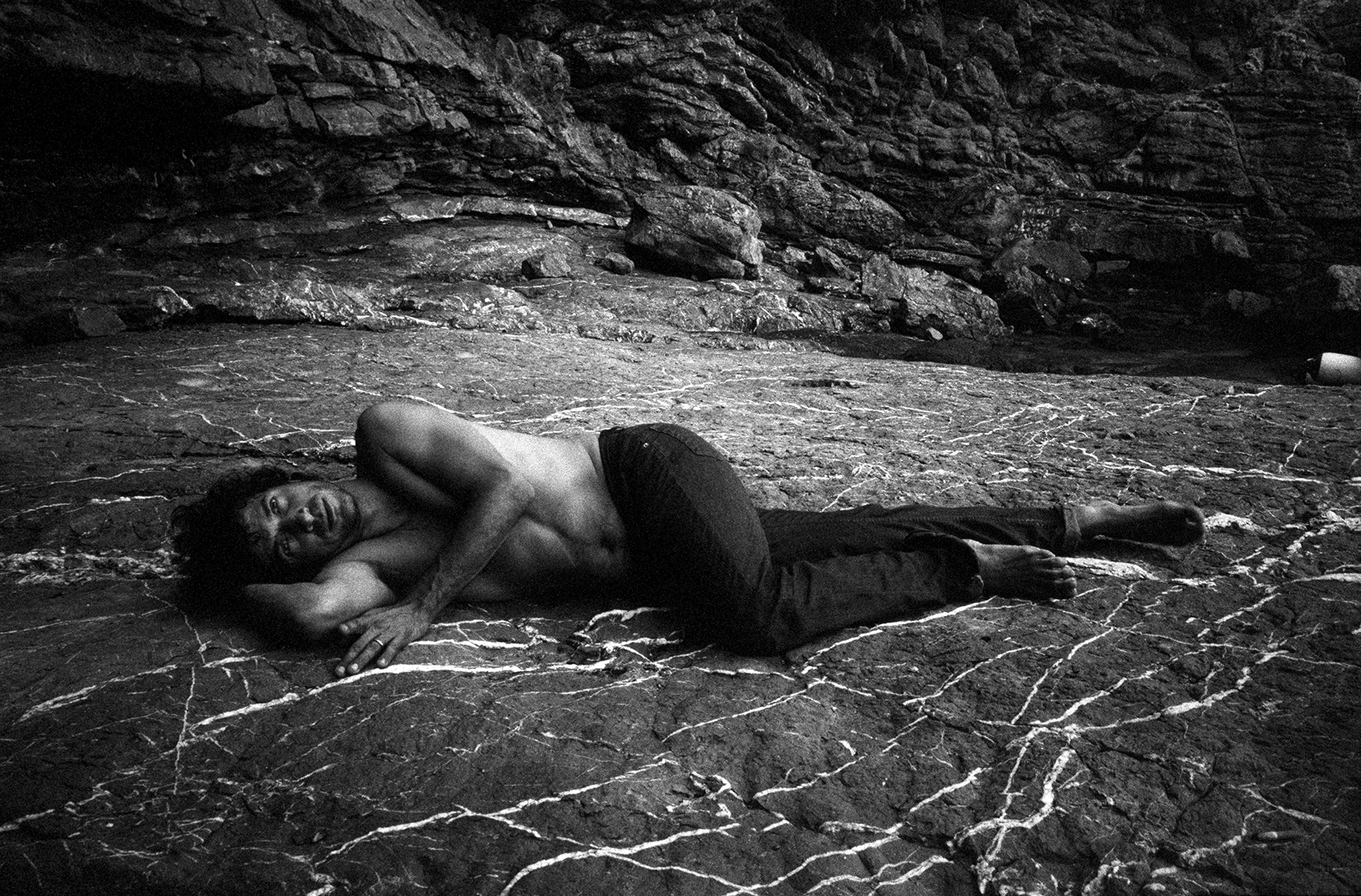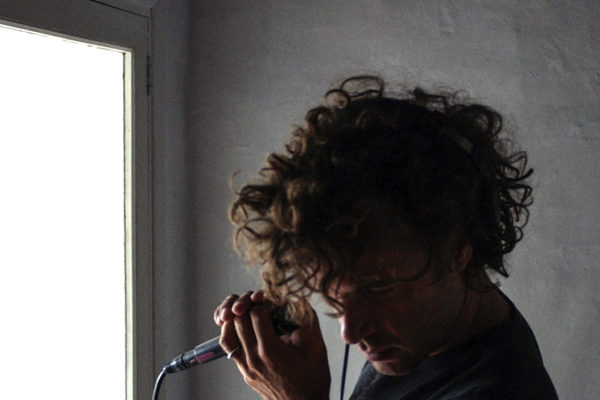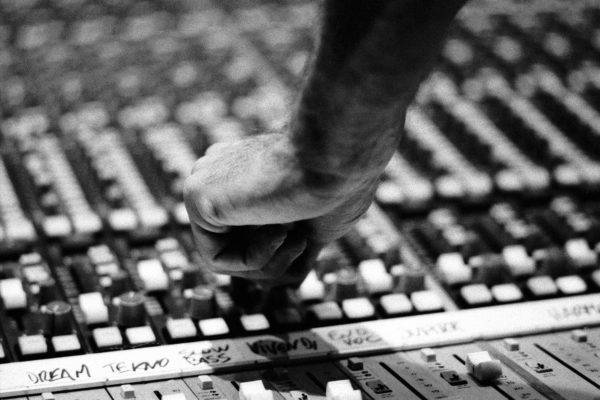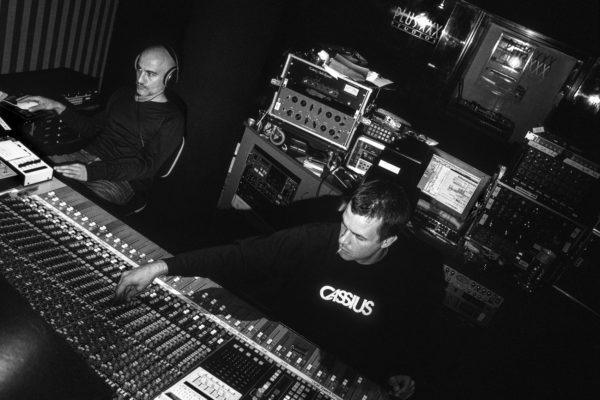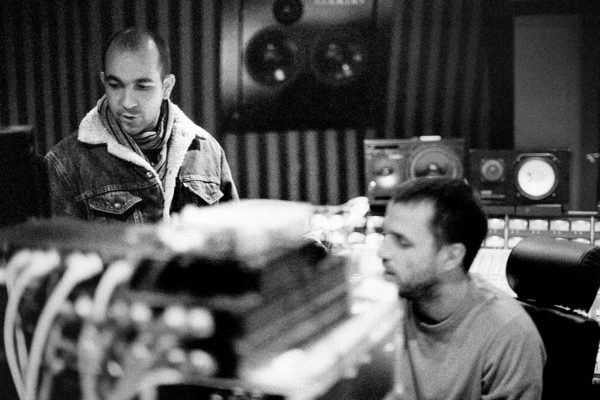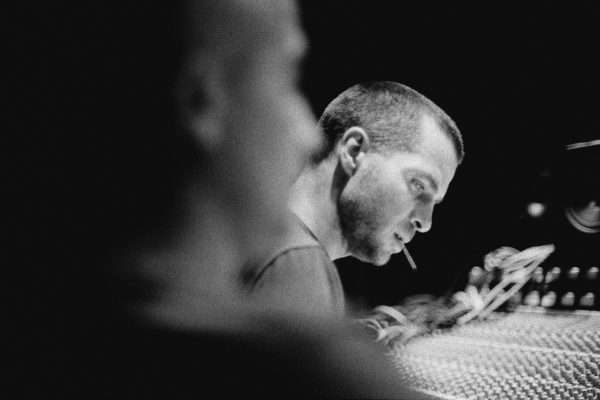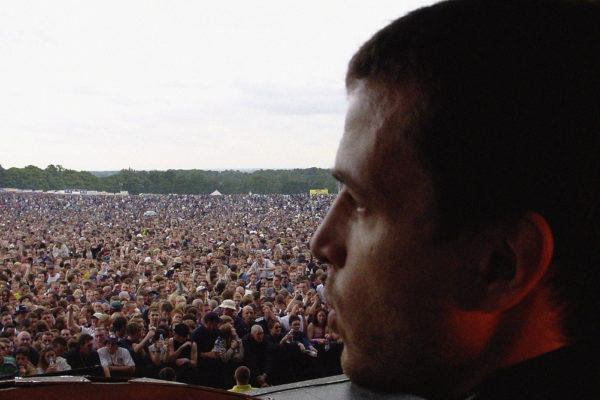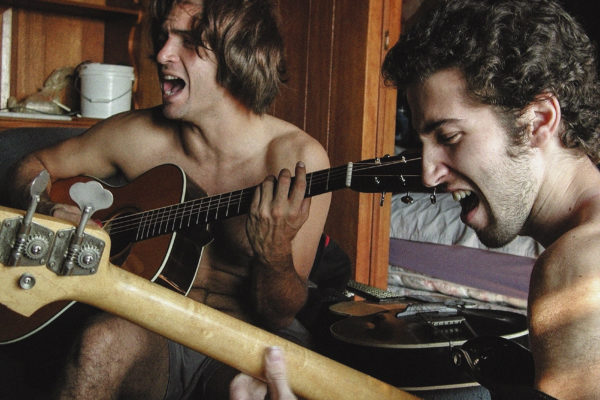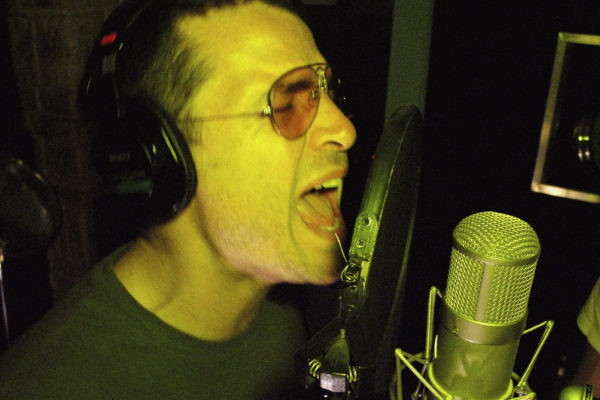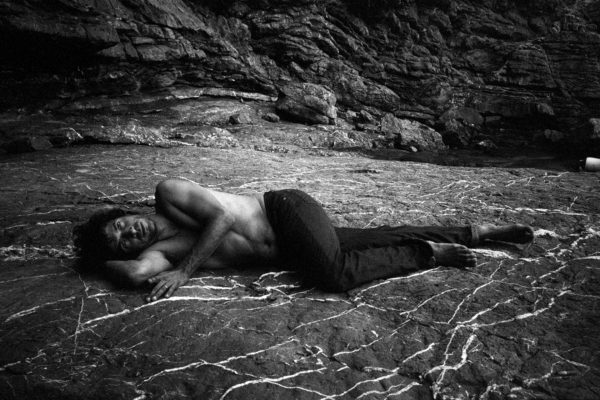Philippe Zdar Forever
Until 27 April, an exhibition pays tribute to the producer-singer-sound engineer Philippe Zdar, who died on 19 June 2019. The photographer Cédric Bertrand, who followed him since his early days, is exhibiting his overwhelmingly beautiful photos. Because he was part of the big family, he became the invisible witness of the evolution of a whole musical movement at the origin of the French Touch. A must-see. Isabelle Cerboneschi

Cédric Bertrand was a student in a photography school when he fell into a parallel world: that of electro music and rave parties. France was discovering a new sound and people were meeting in unlikely places to sway to the rhythm of quasi-binary rhythms and the mental journeys that a few chemical substances were taking them on. This was long before the French Touch. Cédric Bertrand had discovered the universe where he wanted to forget himself.
When he met Philippe Cerboneschi in 1992 on a barge at an after party, the latter was a young sound engineer who had arrived in Paris from his native Savoie a few years earlier. As a teenager, Philippe had started a hard rock band in an unsanitary cellar and dreamed of music. His mother (mine too, by the way) wanted him to follow in his father’s footsteps and become a hotelier. Music took over.
Philippe went through the whole process: from tea boy to assistant, then to sound engineer with Jean-Philippe Bonichon and Dominique Blanc-Francard. When this story of unconditional friendship between Cédric and Philippe was born, the latter had not yet taken the pseudonym of Zdar. He had not yet co-created Motorbass with Etienne de Crécy or Cassius with Hubert Blanc-Francard, Dominique’s son. He had not yet become the most gifted and sought-after sound engineer and producer of his generation. He had that freshness of the beginnings, when you know deep down that you are made for it, but you don’t know the day or the hour…
In the early 1990s, Cédric Bertrand moved in with Philippe, his friend Céline and Etienne de Crécy, on rue Constance, in Montmartre, in a small two-room apartment where they took turns to share the single bed. “Philippe bought two turntables, some vinyl records, he put everything at the foot of the bed, in front of the fireplace and he started to learn to mix, there, at the foot of the bed”, explains Cédric Bertrand.
Two rooms to house a whole tribe quickly became too small and Philippe decided to rent a loft on rue Lepic to reunite this extended family. It was in this transitory place, where the fridge was always empty but the space always full of friends, that Philippe and Etienne started creating electronic music and formed the band Motorbass. Their eponymous album, released in 1993, is one of the founding acts of the French Touch.
In 1997, Cedric joined La Funk Mob, created by Hubert Blanc-Francard, aka Boombass, Philippe’s partner and co-creator of Cassius. It was a sort of hive of artists from all walks of life where you could meet Alex Courtès and Martin Fougerol, the video artists who made Cassius’ first videos, or the American artist Senz, with whom Cédric Bertrand collaborated for the scenography of the Zdar Love Shots exhibition.
When Cassius started to take off, Philippe Zdar gave Cédric a Polaroid and asked him to photograph the shooting of the clips “Cassius 1999” and “I’m a Woman”, directed by Alex and Martin. Cédric quickly became the friend of the light and shade of this small world: where they are, he is, photographing everything that passes under his eyes. Including Daft Punk’s first headphones, created by Alex and Martin in Los Angeles in 2000. He is discreetly present behind the scenes of Zdar’s tours, during his recording sessions at the Motorbass studio, during those long months spent with Boombass in Ibiza to create a new album… Cedric films and immortalizes precious portions of life. These are not stolen moments but given moments that he in turn offers to the eye until April 27 at the Espace Castiglione in Paris*.
The exhibition “Zdar Love Shots” by Cédric Bertrand is a kind of narrative without words, in which he tells the story of the emergence of a musical movement and the evolution of Philippe Zdar’s career. But it is above all a tribute, a message sent post mortem to his friend, who passed away on 19 June 2019.
INTERVIEW
How did you meet Philippe Cerboneschi, before he took the pseudonym of Zdar?
Cédric Bertrand : I met him through the daughter of the singer Christophe, Lucie Bevilacqua. We were both in England. She called him to pick us up at the airport and he came. That’s where I met him for the first time. Then I met him again at an after party on a barge. I think I stuck to him a bit at first, before we became really good friends. I knew everyone in the techno scene, I’d been around since 1989, when I started going to raves and eating ecstasy. At that time I had given up photography. I had given up everything.
What did Philippe represent to you?
The person I dreamed of spending time with. He was not known at the time. A friendship was born.
Motorbass, which Philippe co-created with Etienne de Crécy, is a legendary album. How did you become part of the adventure?
The three of us used to go and distribute the vinyls to record shops abroad, in Belgium, in Holland… It was the first French Touch underground vinyl to be released in France. It is mythical. In my eyes, it’s the best French album. I was there and in my own way, I took part in all that.
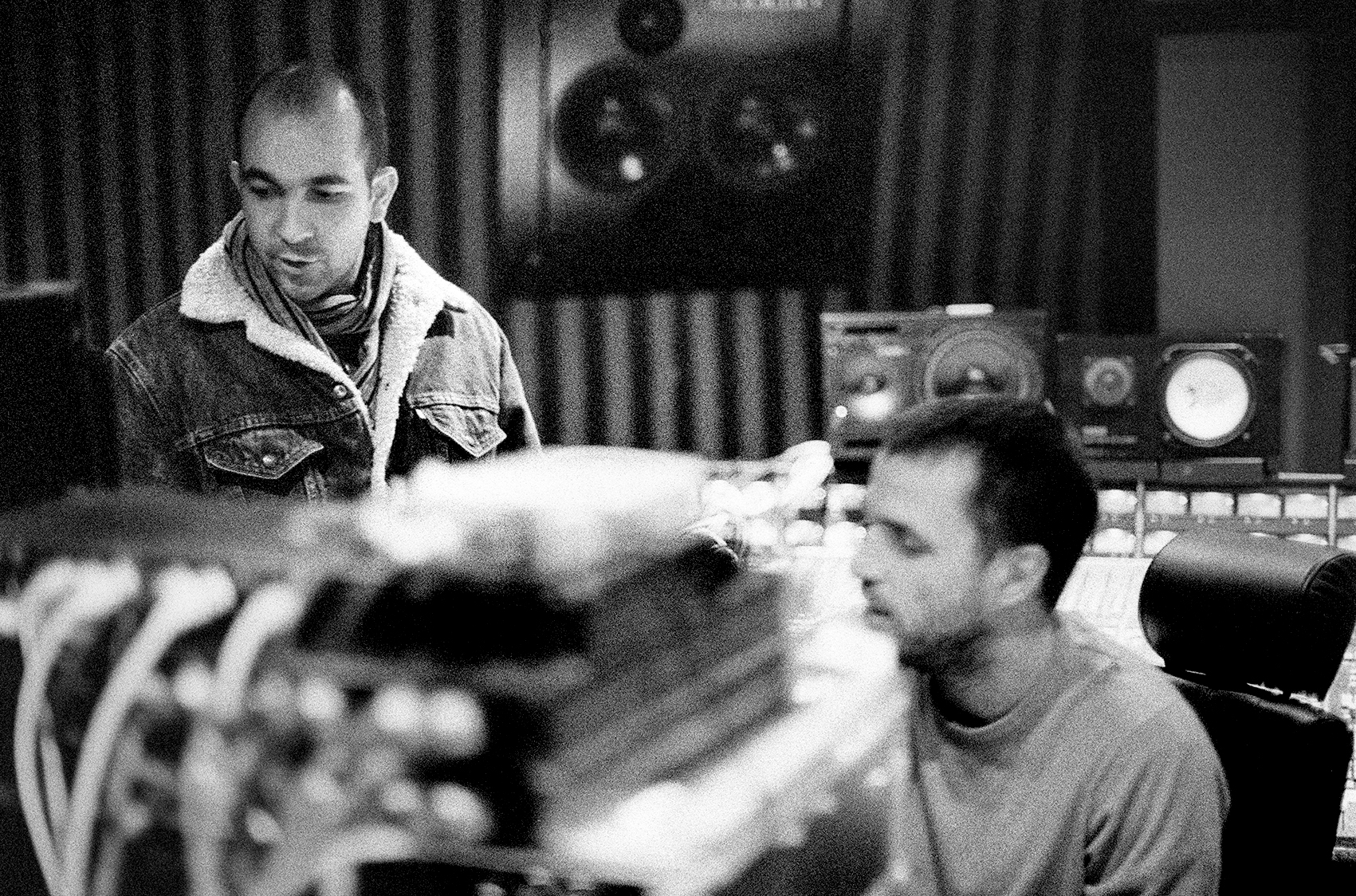
How did you start taking pictures for Cassius?
Philippe gave me a Polaroid on the set of the Cassius 99 video and I started taking pictures. Then he asked me to cover the I’m a woman video, and that’s when he wrote me “The Best” about my images. From then on, he asked me to follow them. I bought my first digital camera. I was trying to find my colour: I like to push the film and get a big grain. It’s like a painting, a drawing. They are polished photos, but in my style. And because I was only using natural light, my images could be blown out and very dark. As a result, in the clubs, 90% of my pictures were rotten and I decided to make videos. For a few years I followed the band Cassius on tour. This allowed me to do making of’s and teasers for Virgin, where Zdar and Boombass were signed.
You followed them in Ibiza, when they were creating, on tour, in everyday life. Your photos are breathtakingly beautiful and discreet. Is it because you were part of this huge family that Philippe had created that nothing was forbidden to you?
They didn’t see me, in fact: as it was the family, they didn’t pay any attention to the camera. They lived, they worked and I, meanwhile, made photos and videos.
How did you end up in Los Angeles when the Daft Punk helmets were created?
I had introduced the video artists Alex Courtès and Martin Fougerol to Philippe. They were the ones who made the Cassius 99 video. At the time I was doing photos for both Cassius and Alex and Martin, and they were the ones who designed the first version of the Daft Punk helmets. I was there with them and I took pictures, but at the time I didn’t realise that something was happening that would make music history.
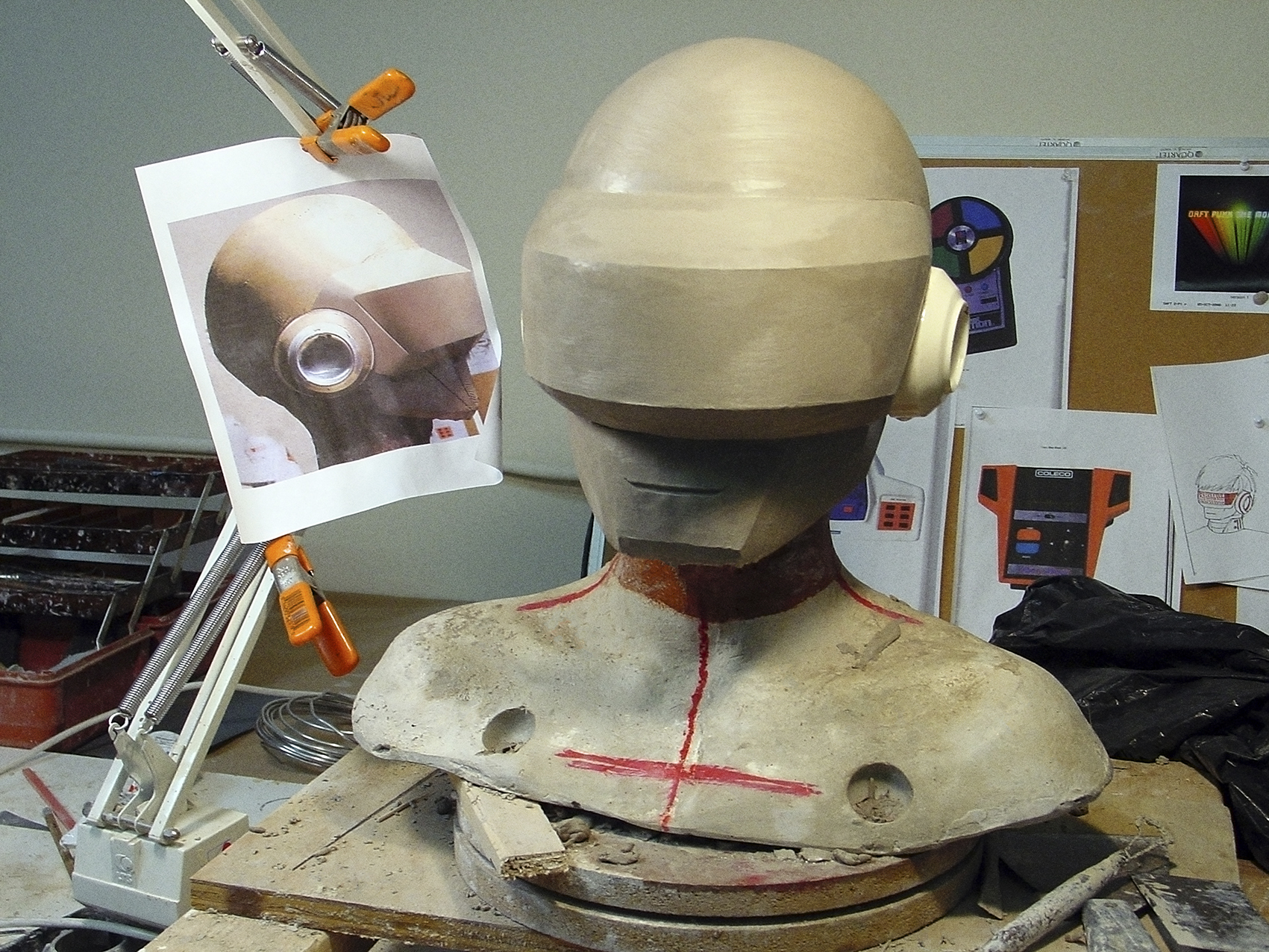
Philippe had the art of loving intensely and he was loved in return. But was there a flip side to this solar medal?
He sought love for its own sake. The death of his father when he was ten years old had affected him enormously. He had to be the best in everything…
« Zdar Love Shots », Cédric Bertrand, Preview Gallery 2022, Espace Castiglione, 14 rue de Castiglione, 75001


